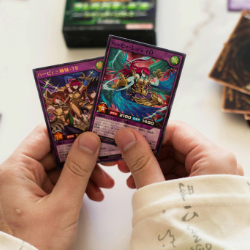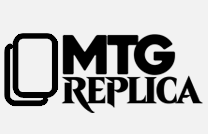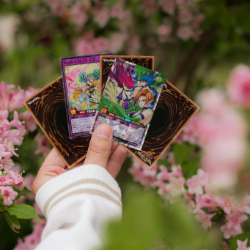
When considering proxy cards for Magic: The Gathering, a common concern among players is detectability. Many wonder, “Are mtgreplica’s mtg fake cards easily detectable, and how do they compare to authentic cards?” This is a crucial question for anyone looking to use proxies for casual play or playtesting, as the goal is often to have them blend in seamlessly with genuine cards. This blog post will address the detectability of mtgreplica’s mtg fake cards and the quality measures we employ.
At mtgreplica, we pride ourselves on producing high-quality mtg fake cards that offer an unparalleled resemblance to authentic Magic: The Gathering cards. Our aim is to provide players with an accessible way to enjoy the game’s most powerful and iconic cards without the exorbitant cost. We understand that for proxies to be truly useful, they must hold up to scrutiny in a casual setting.
So, how does mtgreplica ensure that our mtg fake cards are not easily detectable in a typical play environment? Our manufacturing process is meticulously designed to replicate the key characteristics of genuine Magic cards. We focus on:
- Print Quality and Resolution: We utilize advanced printing technology to ensure that the artwork, text, and symbols are crisp, vibrant, and accurately colored. Low-quality proxies often suffer from blurry images or washed-out colors, making them immediately obvious. mtgreplica’s proxies are produced with high resolution to avoid these pitfalls, making visual detection extremely difficult, especially when sleeved.
- Card Stock and Feel: The tactile experience of a Magic card is vital. Authentic cards have a specific thickness, flexibility, and snap. Our mtg fake cards are printed on carefully selected card stock that closely matches these physical properties. When sleeved, they should feel indistinguishable from genuine cards, preventing detection by touch during shuffling or drawing. We aim for a consistent weight and feel across our entire product line.
- Cut and Dimensions: Precise cutting is another often-overlooked aspect of proxy quality. Sloppily cut cards can stick out in a deck. mtgreplica ensures that our mtg fake cards are cut to the exact dimensions of official Magic cards, allowing them to integrate perfectly into your sleeved deck without any tell-tale edges or inconsistencies.
- Backs of the Cards: While the front of the card is what’s primarily seen during play, the back can also be a giveaway. mtgreplica focuses on replicating the iconic Magic card back with high fidelity. While no proxy is ever 100% identical under microscopic scrutiny or specific light tests designed to detect counterfeits, our goal is to ensure that under normal playing conditions (especially when sleeved), the backs do not immediately scream “fake.”
It is important to reiterate that while mtgreplica’s mtg fake cards are of exceptionally high quality, they are still proxies. They are intended for casual play, playtesting, and unsanctioned events where proxies are explicitly allowed. They are not designed to pass as genuine cards in official, sanctioned Wizards of the Coast tournaments, nor are they intended for resale as authentic products. We advocate for responsible proxy use within the community, encouraging players to be transparent about their use in casual games.
In conclusion, if you’re concerned about the detectability of mtg fake cards for your casual Magic: The Gathering games or playtesting sessions, mtgreplica offers a solution designed to provide a near-authentic experience. Our commitment to high print resolution, accurate card stock, and precise cutting ensures that our proxies blend seamlessly into your deck, allowing you to enjoy the game to its fullest without compromising on quality or drawing unwanted attention. Choose mtgreplica for proxies that look and feel great.

